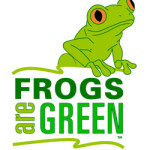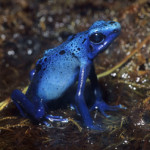Written by Guest Blogger: Mark Day
Dusk ascends to cover the suburb of Bergvliet under a blanket of darkness. It brings with it the chill of a Wintery August night in Cape Town, South Africa, as a nippy breeze sweeps across the small urban wetland of Die Oog (an Afrikaans word meaning “The Eye”).
This man-made depression was originally dug out some 284 years ago to provide water for livestock on the neighbouring farm of Dreyersdal. In more recent years, however, Die Oog has come to serve a much greater purpose, as a pivotal breeding site for one of Cape Town’s most threatened amphibians, the western leopard toad Ameitophrynus pantherinus.
As little as six years ago it was thought that only several such breeding sites remained in existence, for a species which has suffered massive population declines as a consequence of numerous threats including urban expansion, habitat destruction and population decimation through road kills. Today, conservationists and scientists with the aid of concerned volunteers and the public have listed a total of 52 breeding sites within the Cape Town range of the species. Further eastwards, some 150 kilometres away from southern Cape Town, a largely unprotected population comprising seven breeding sites exists.
Unlike most frogs which remain at water courses throughout the year, toads live in what’s termed ‘foraging areas’ where they lay dormant by day and hunt by night—with an exception for August month and there about when they migrate to and from local aquatic environments to breed. Presently, the majority of these foraging and breeding areas fall under urban suburbia, guaranteeing a window of constant interaction between these toads and the unknowing dangers their human neighbours pose.
Despite current conservation action and volunteer efforts to protect the Cape Town populations, census data from the 2009 breeding season only generated a recorded 1125 live migrants and 258 dead. Great strides have been achieved in recent years through a consistent increase in awareness of the plight of the species and in the recruitment of volunteers. The fate of the species is however uncertain—unless the citizens residing in these areas value their endemic and endangered leopard toad, there will merely remain stories of its once enigmatic nature and quiet existence.
For further details on the species, join the group on Facebook, The Endangered Western Leopard Toad or visit the website, www.leopardtoad.co.za.
Mark Day
Coordinator: Awareness, Volunteer & Census Operations
Western Leopard Toad Conservation Committee
Email: leopardtoad@gmail.com
Websites: www.leopardtoad.co.za / www.toadnuts.co.za
Facebook: The Endangered Western Leopard Toad




